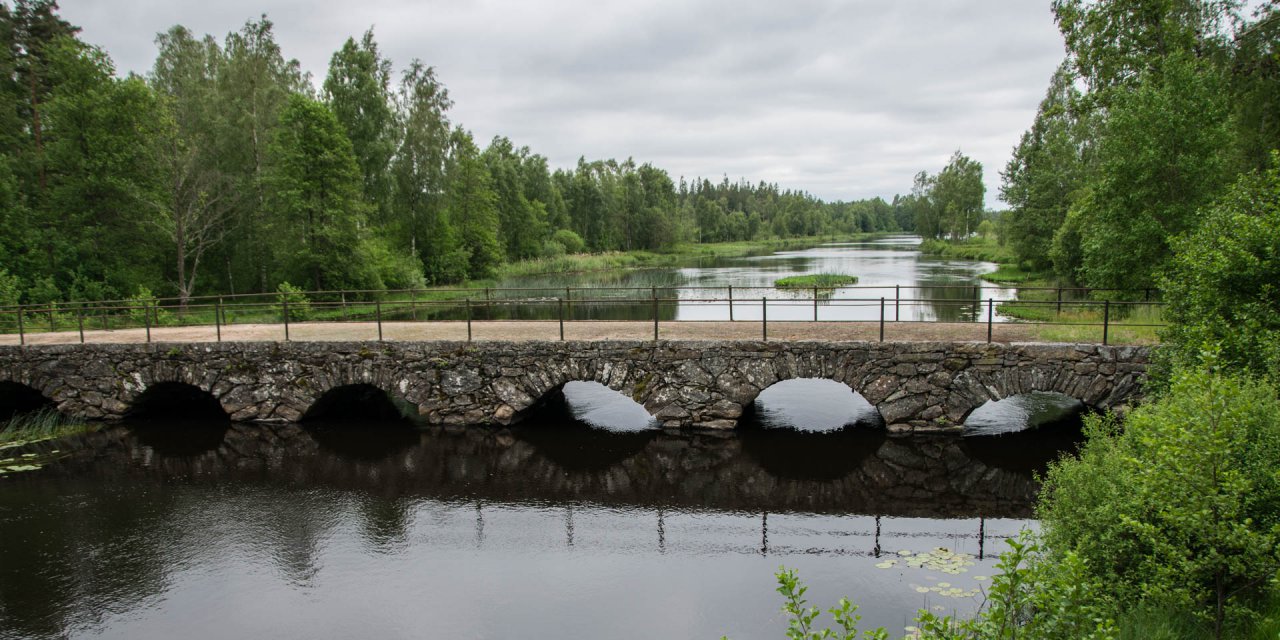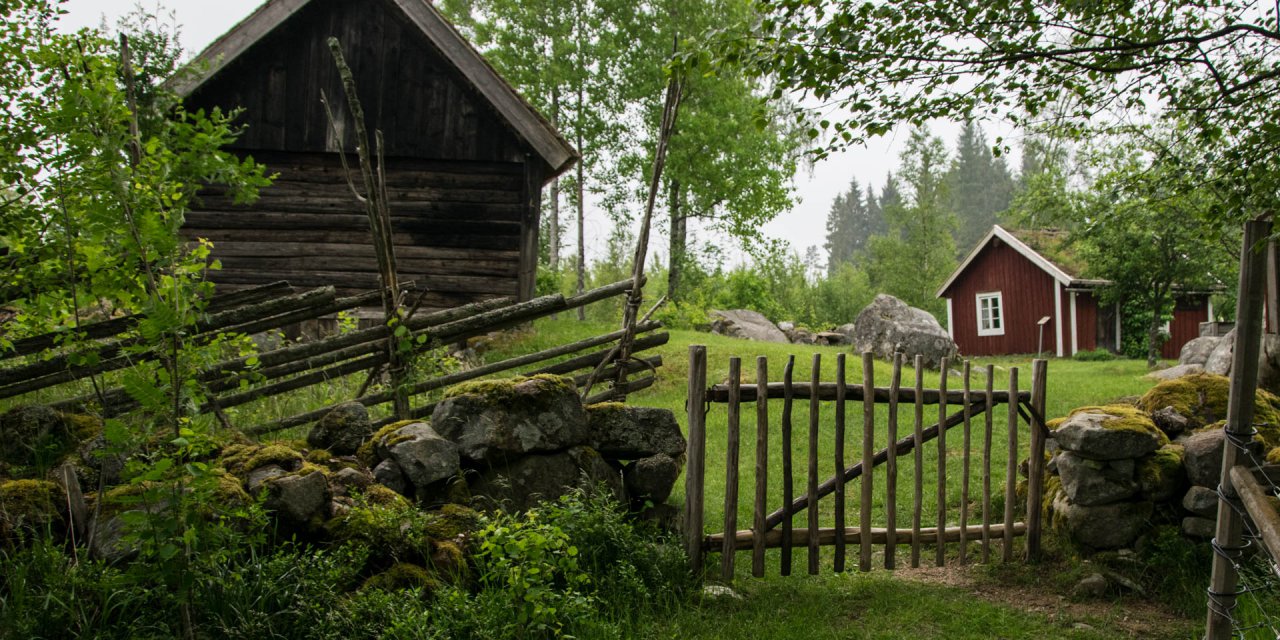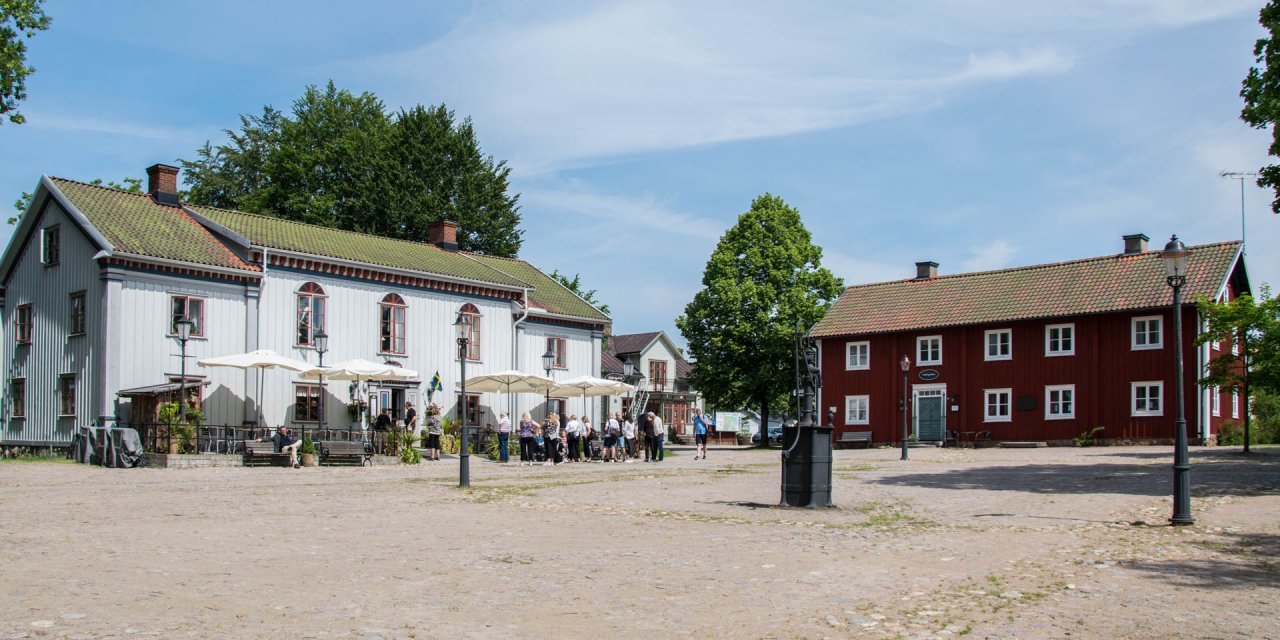

Galgahallarna
Mythical execution site near Valid
The old execution site Galgahallarna (The gallows rock) is located in the forest between the hamlet of Valid and the western shore of lake Virestadsjön in the eastern part of the municipality of Älmhult.
Galgahallarna are first of all only two big rocks, which were once dumped there by an ice-age glacier. They are three to five meters high and between them there is a vertical crevice about one meter wide. But what makes the rocks a mystical place of a folk tale with a true core is their cruel past and the further events that took place around them.
Galgahallarna is, by the way, one of the ten designated places of the fairyland Sagobygden in the municipality of Älmhult. Places surrounded by folk tales, each with a text in a red wooden cabinet set up on site.
The Galgahallarna legend
Sometime in the dark Middle Ages, when the region was still a Danish border area, the tyrannical bailiff Trotte ruled there with unlimited power over the rural population. He was nicknamed "Valid Skräck" (The Horror of Valid), named after the village near his castle, which stood on a small island in the southern part of Virestadsjön.
He had people from his sphere of power executed for the smallest of offences or even completely arbitrarily. For this purpose, the delinquent was brought into the gap between the rocks, the arms were spread out on both sides, placed on top of the rocks and weighted down with heavy stones so that the body hung freely between the rocks.
As in a crucifixion, hanging by the outstretched arms caused a rather agonizing death by suffocation after some time. The victims, who were still alive until nightfall, had Trotte killed by lancet stabs to prevent attempts of liberation under the cover of darkness.
Apart from other random actions, the bailiff harassed the population with his obsessive idea of building a bridge from his castle island to the lakeshore – but not over the short distance to the west bank but to the east bank of the lake. At some point halfway along the route, however, the patience of the peasants was finally at an end.
When the bailiff was on his way to the Christmas mass in the church of Virestad on a dark Christmas morning, he was already expected by a crowd on the south side of the church. Almost the entire population including men, women and children had gathered and publicly stoned the hated bailiff to death.
The body of the tyrant was buried on the south side of the church and the grave was covered with a large stone to prevent him from returning as a revenant, according to an old superstition. On the path leading to the grave, another large stone was placed, which was kicked and spat on by churchgoers and cemetery visitors.
The origin of Lappalänet
After the bailiff was judged, the mob went to the castle, plundered it and then burned it down. The island no longer exists, due to the lowering of the water level, but where it once was, burnt remains of grain were found.
The raid was well planned and no individuals could be identified as the perpetrators. So all involved were sentenced to pay a fine. Since the population was very poor and had already been squeezed out by the bailiff, the fine could be paid in leather the size of a whole animal skin. Whoever could not afford this either, was allowed to pay off his fine with smaller pieces of leather or patches (Swedish: lappar).
And therefore, according to legend, this part of the parish was popularly called "Lappalänet" (Patch County) – a nickname that is still used today by the local population.



